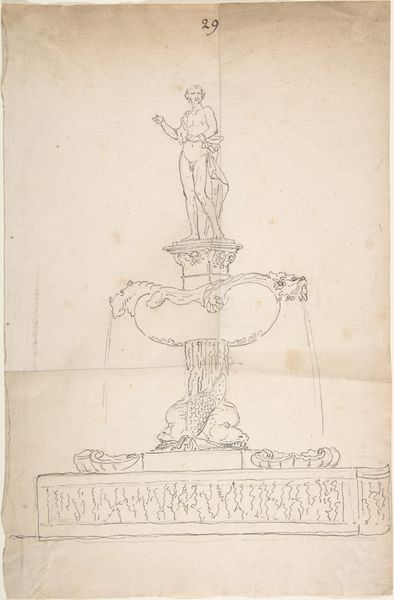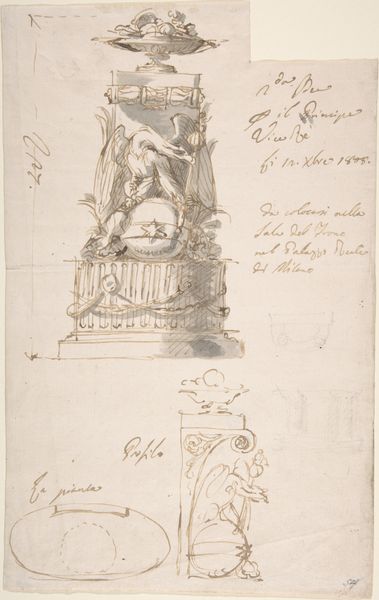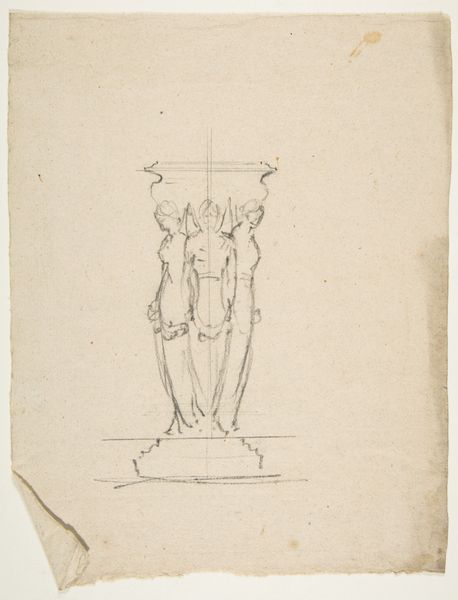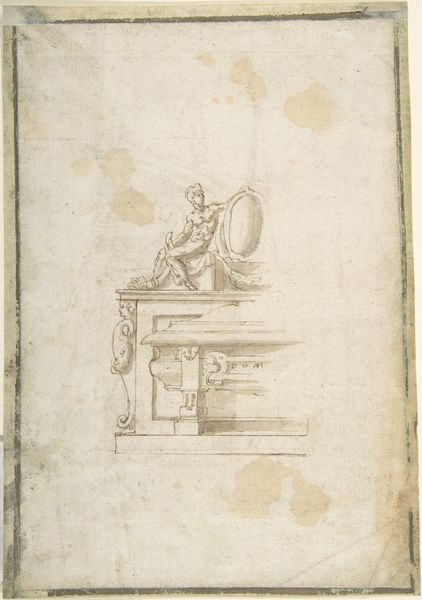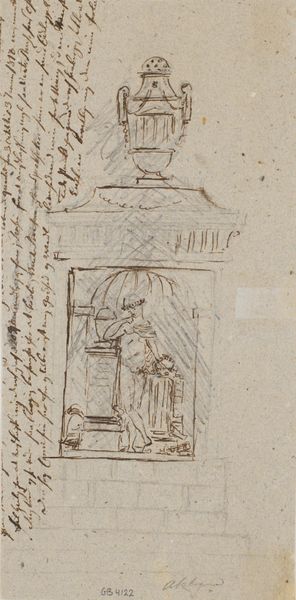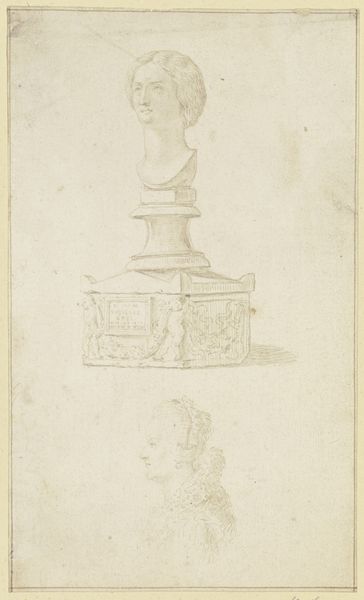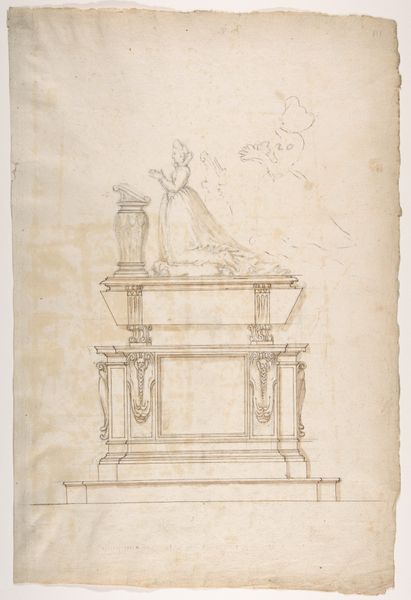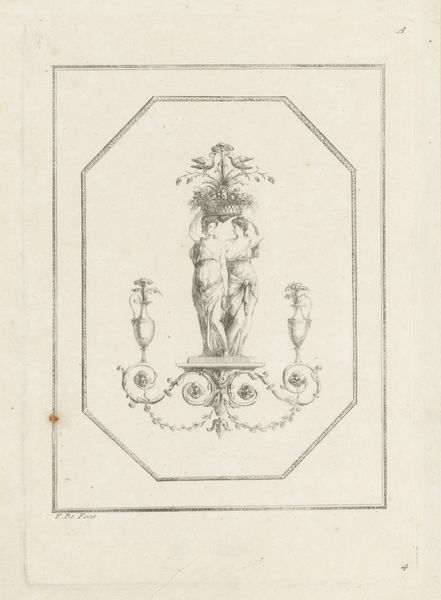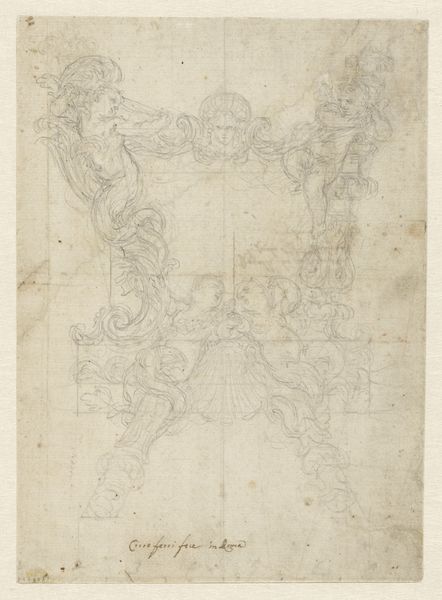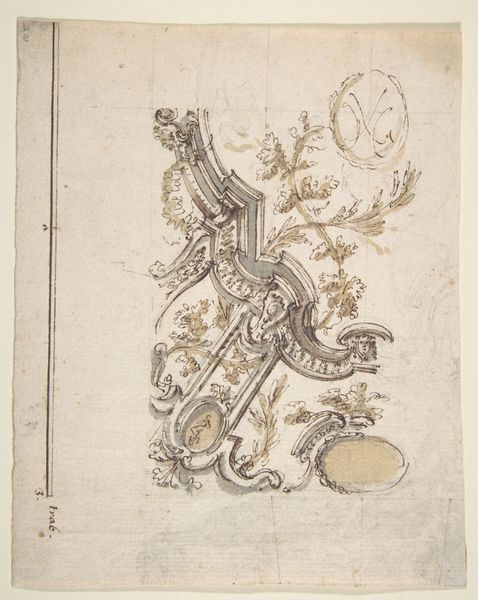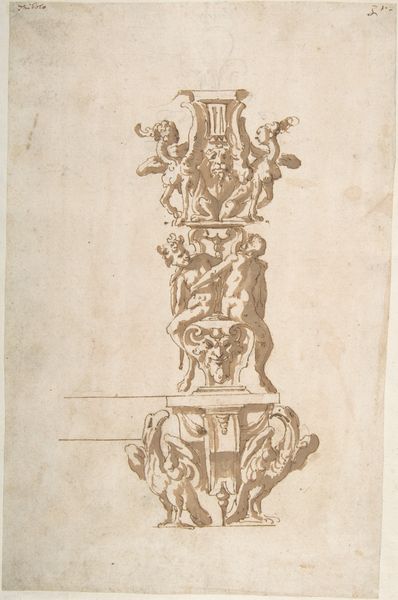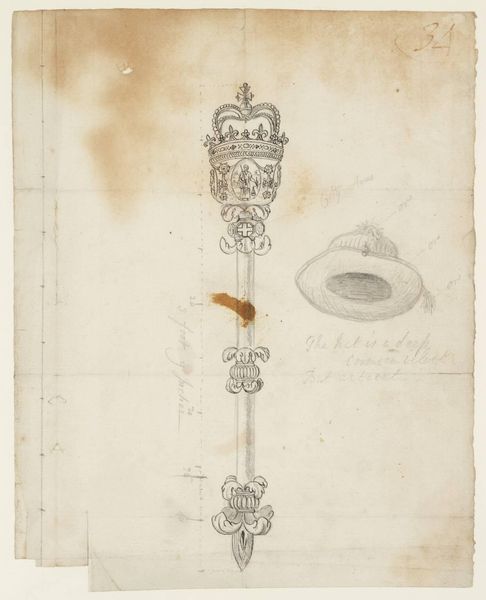
drawing, sculpture, pencil
#
drawing
#
baroque
#
figuration
#
sculpture
#
pencil
#
history-painting
Dimensions: height 425 mm, width 364 mm
Copyright: Rijks Museum: Open Domain
Curator: This is a drawing attributed to Elias van Nijmegen, likely created between 1677 and 1755. The artwork, rendered in pencil, depicts the Statue of Neptune. Editor: Immediately, I'm struck by its delicate lines, almost ephemeral quality. Despite being a study for a sculpture, it feels very fluid and alive, not quite fixed or permanent. There's a palpable tension between the grandiose subject matter and the intimate medium. Curator: Absolutely, and understanding its place within the artistic context of the Baroque era is crucial. The dramatic pose, the flowing drapery—these are hallmarks of Baroque aesthetics adapted from the classical sculpture tradition. However, Van Nijmegen, a painter specializing in historical depictions and decorations, adds a distinct Netherlandish realism to the mythic drama. Editor: It also calls to question how power and mythology have been historically constructed and celebrated through art. Neptune, or Poseidon in Greek mythology, symbolizes domination over the seas. But look at how small the God appears! Placing him atop such an ornamental plinth, does it subtly undermine his power or rather amplify the constructedness of these patriarchal icons? Curator: An important point to raise. In the social and political context of the time, depicting classical figures was often a way for artists to align themselves with intellectual and political authority. Commissioners expected that the artwork reinforce civic ideas. Editor: And there is something unnerving about Neptune wielding a trident as an object of authority, given today's escalating water crises globally. Is the role of mythology more to glorify destruction rather than offer an opportunity to foster responsibility towards a natural ecosystem? Curator: Thinking about these associations certainly adds new depth to this rendering of an older sculptural type. Perhaps it reminds us that while representations of power can persist, their meanings are always shifting and ripe for re-evaluation. Editor: Exactly, seeing it anew opens a fresh conversation about cultural legacy and societal responsibilities today. Curator: Yes. Art really can teach us more about ourselves, and how to be better.
Comments
No comments
Be the first to comment and join the conversation on the ultimate creative platform.
